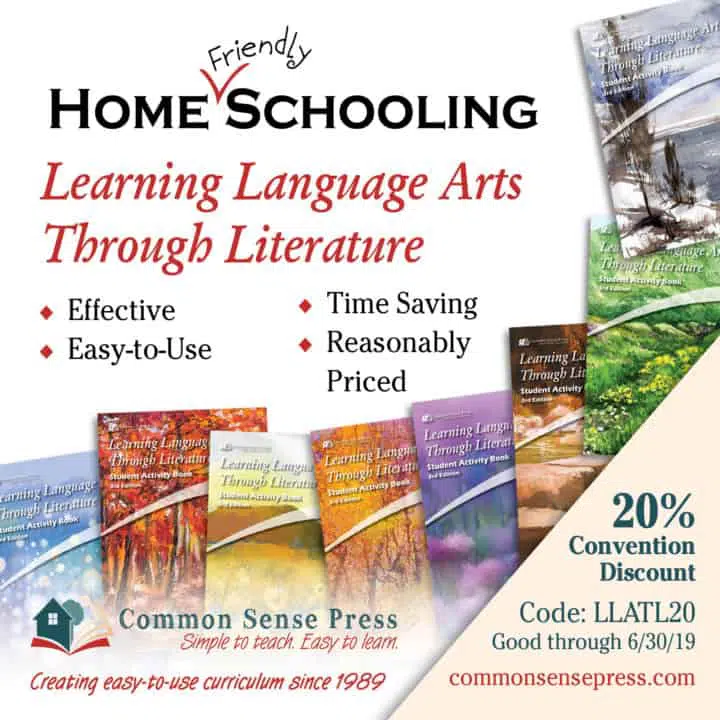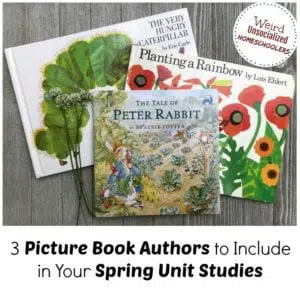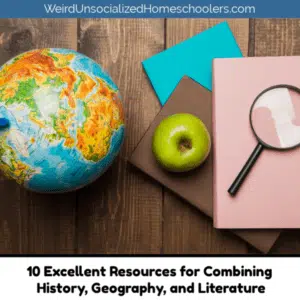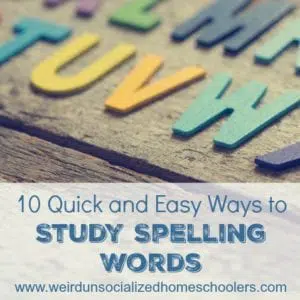How to Create Simple but Effective Homeschool Language Arts Lessons
An integrated approach is one of the best ways to teach homeschool language arts lessons. Learn how to create literature-based lessons easily.
Sometimes, we homeschooling parents like to make learning more complicated than it is. We forget about the natural curiosity of children and lose sight of the fact that so much of the information we want to impart is already part of our everyday lives.
For example, we feel that we have to pull together the perfect spelling, phonics, handwriting, vocabulary, and grammar programs. (Guilty.) However, most of us likely have all we need for a great homeschool language arts lesson sitting on {one of our many} our bookshelves.
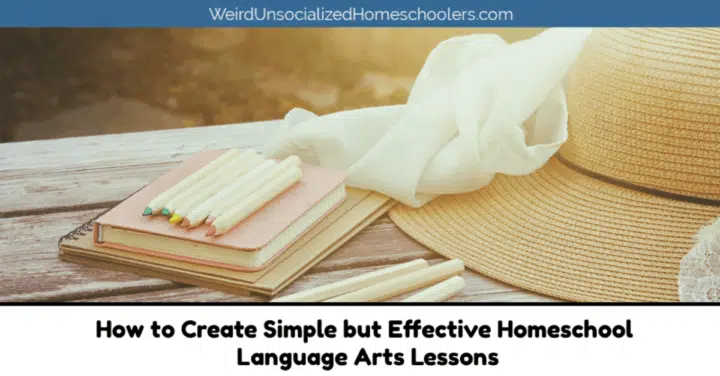
And, no, I’m not talking about those stacks of dusty, unused-but-I-just-might-need-it-someday homeschool curriculum. (Yes, I have them, too.)
I’m talking about the books that you already own. The ones you snuggle up with for bedtime stories. The ones your voracious reader devours when she’s supposed to be sleeping. And, the ones the whole family gathers around to hear during family read-aloud time.
Integrated Language Arts
You can start with some of your family’s favorite books – or those you’ll be reading for history and science – and create an integrated language arts lesson. An integrated language arts lesson is one that immerses students in reading, writing, spelling, and grammar across all subject areas.
Why would you want to do that?
First, research shows that an integrated language arts approach is a much more effective approach than teaching these skills as segmented subjects.
Second, it saves time and money. Instead of buying and then pulling out all of the spelling, vocabulary, phonics, writing, and grammar curriculum (and, yes, I have my favorites, too – sometimes it’s hard to resist shiny), you just pull out the biography, classic literature, or historical fiction novel your student is already reading.
Third, an integrated language arts approach allows you to capitalize on your student’s interests. Got a Little House fan? Star Wars? Boxcar Kids? Magic Treehouse? It’s a whole lot easier to get kids interested in the lesson you’re trying to teach when you start with something they enjoy.
How to Build a Literature-Based Language Arts Lesson
Building a language arts lesson around your family’s favorite literature is easy. The two main requirements are a shift in mindset and a willingness to plan ahead.
The mindset shift is for you, Mom or Dad. Don’t turn their favorite books into {cue ominous music} school. Instead, think of integrated language arts as showing your kids that what they are learning is already part of their everyday lives.
Spelling and Phonics
Use the books you’re reading to point out and reinforce phonics and spelling rules. You’d be surprised at how many examples you’ll find when you’re looking for them. There are a few ways you can work on phonics and spelling without disrupting the flow of the story.
One way is to pre-read the chapter looking for words that follow the spelling or phonics rules your child is working on. Jot down those you find, noting page numbers if needed. Then, you can go back and point them out to your child after reading the story. Or, you can go over your list with your child before you read and ask him to look and listen for those words as you read.
Another way is to give your student the list after you read so he can look back through the passage for them. Turn it into a scavenger hunt and see how many he can find in a given amount of time.
Finally, if your student is reading independently, he can make his own list, jotting down the words as he encounters them or scanning for them after reading.
Vocabulary
You can use similar techniques to pull vocabulary words from the books you’re reading. Either pick them out yourself as you pre-read or ask your kids to point out or jot down unfamiliar words.
It’s a good idea for kids who are reading independently to use an index card as a bookmark. Then, they can keep a list of unfamiliar words as they read and look them up later. Stop and define words while you’re reading only if the reader can’t figure out the gist from context or it affects the understanding of the passage.
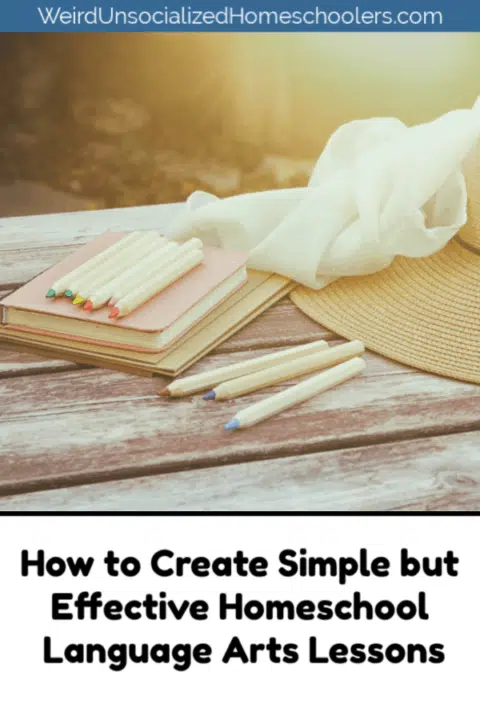
Grammar, Writing, and Penmanship
What better way to study grammar and writing than by seeing them in action? It doesn’t matter what part of speech you’re studying; you’ll find it in the pages of the books you’re already reading. After reading, pick a page and make a list of all the verbs, common nouns, proper nouns, or prepositions.
Are you studying capitalization and punctuation? Open any page of a book, and you’ll find a dozen examples! And, these suggestions aren’t just for elementary students. In a biography or other non-fiction book, high school students can see examples of higher level skills such as quoting sources, using footnotes, writing a bibliography, and writing dialogue.
Taking copywork, narration, or dictation from the books your students are reading is an excellent tool for practicing grammar, spelling, and penmanship skills.
Learning Language Arts Through Literature
If you like the idea of an integrated language arts approach, but don’t want to try to pull it together yourself, check out Learning Language Arts Through Literature. They offer an entire line of literature-based language arts curriculum for kids in first grade through high school.
Their high school level books cover World, American, and British literature. All levels are inspired by Dr. Ruth Beechik’s natural, integrated learning philosophies. Using quality literature, students will learn:
- Spelling
- Grammar
- Vocabulary
- Creative writing
- Thinking skills
- Research skills
- Penmanship
Visit Common Sense Press to check out all of the Learning Language Arts titles and view sample lessons for each level. Use coupon code LLATL20 to save 20% until 6/30/19.
You Might Also Like
Kris Bales is a newly-retired homeschool mom and the quirky, Christ-following, painfully honest founder (and former owner) of Weird, Unsocialized Homeschoolers. She has a pretty serious addiction to sweet tea and Words with Friends. Kris and her husband of over 30 years are parents to three amazing homeschool grads. They share their home with three dogs, two cats, a ball python, a bearded dragon, and seven birds.



